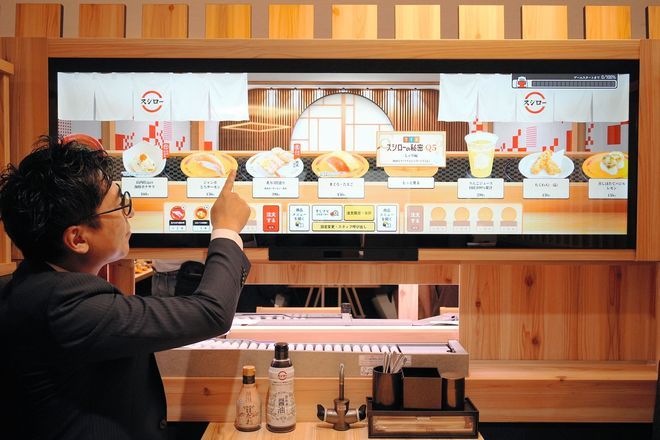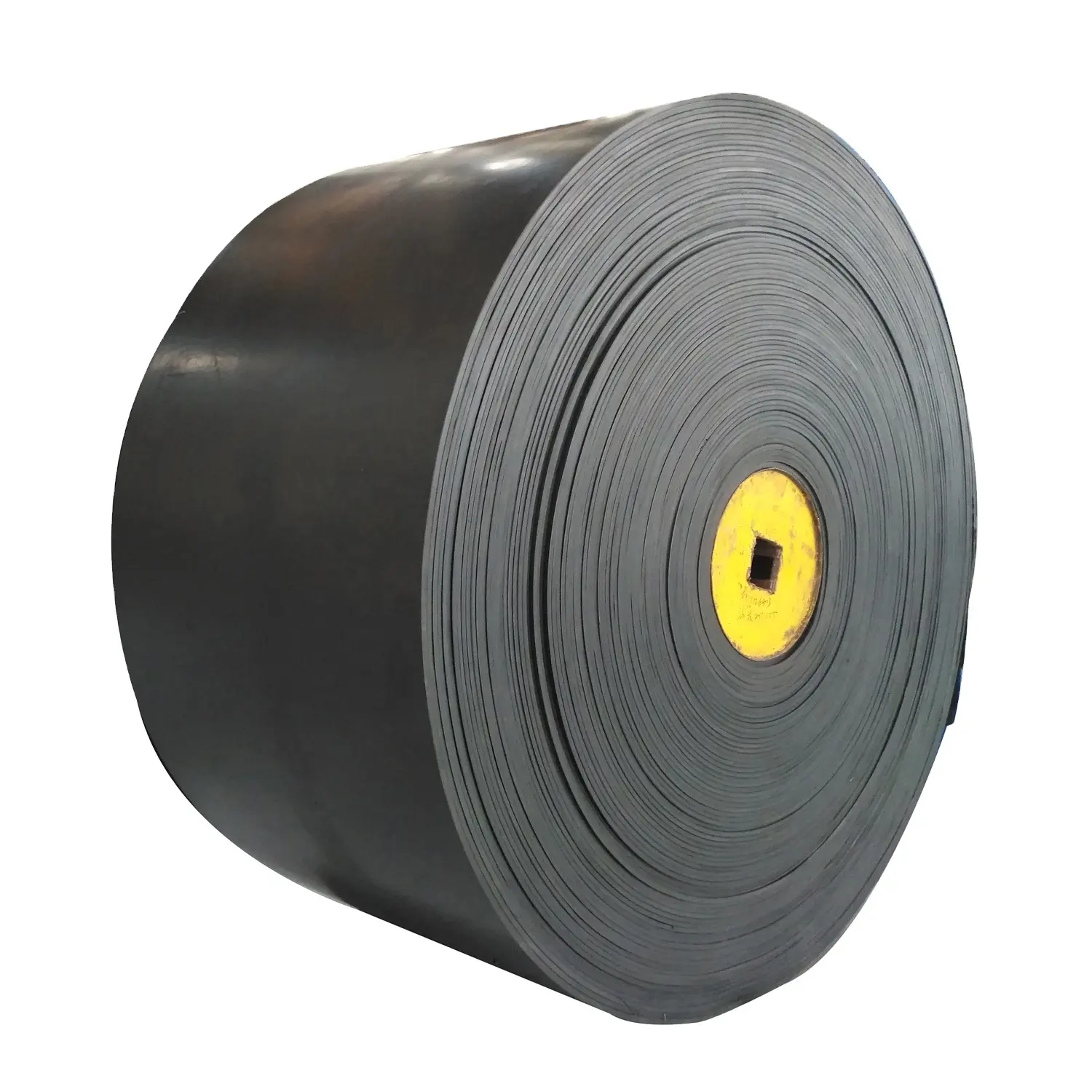Skip to content
Your browser does not support JavaScript, or it is disabled.Please check the site policy for more information.
The Asahi Shimbun
Business
article
By TOMOHIKO KANEKO/ Staff Writer
March 19, 2024 at 07:00 JST
 The Digiro ordering system, showing animated images of dishes riding around on the conveyor belt is introduced at Akindo Sushiro Co.’s Shinjuku Nishiguchi outlet in Tokyo on Sept. 27. (Tetsuro Takehana)
The Digiro ordering system, showing animated images of dishes riding around on the conveyor belt is introduced at Akindo Sushiro Co.’s Shinjuku Nishiguchi outlet in Tokyo on Sept. 27. (Tetsuro Takehana)
Conveyor-belt sushi chains are facing an existential crisis.
Although the automated, rotating serving system has been on a decreasing trend for several years, chain operators were confronted with a tough decision in 2023 following the COVID-19 pandemic and a spate of malicious pranks by attention-seeking customers.
Choushimaru Co. operates about 80 Sushi Choushimaru outlets in the Tokyo metropolitan area. But its renovated outlet in Nerima Ward that opened in October last year contains no conveyor belts.
A senior staff member told employees before its opening: “We can add value by talking to customers. I’d like you to place importance on serving customers with a human touch and being considerate to them.”
In spring last year, Choushimaru said through its social media account that it would move away from conveyor-belt sushi. It subsequently decided to stop serving dishes on rotating belts at all outlets in phases.
Operators of the Hama-Sushi and Kappa Sushi chains quickly changed their serving systems to deliver plates specifically ordered by customers on a straight-line conveyor belt.
Conveyor-belt sushi was invented to serve many customers quickly and to streamline manual tasks. The operation reduced labor expenses, leading to lower prices for the dishes.
However, operators had to shoulder disposal costs of unwanted plates that lost their freshness while sitting on the belt for too long.
In recent years, the sushi chains have allowed customers to order freshly prepared sushi using touch panels and other devices. Thanks to the increasingly mechanized systems, sushi chain operators can handle many customers without putting dishes on the rotating belt, thus reducing food waste.
Another advantage with the newer systems is that the companies can analyze orders to gain insight into sales patterns and procurement activities.
The COVID-19 pandemic made consumers more wary about germs spreading on exposed food.
The hygiene issue was further heightened after sushi chains were plagued by viral videos of customers licking and putting back utensils, soy sauce bottles, teacups and even the food traveling around on the conveyor belts.
The companies were forced to respond to such malicious behavior by replacing soy sauce bottles, powdered tea, teacups and other items each time they received new customers.
But a Choushimaru official stressed that such pranks were not the direct reason behind the company’s decision to stop serving dishes on conveyor belts.
Instead, the sushi chain has been catering to changing trends among customers, the official said.
Looking around the interior of the Tokyo outlet with no conveyor belts, the official added, “I’m not sure whether there should be a genre for rotating sushi.”
Among the five major conveyor-belt sushi chain operators, Kura Sushi Inc. is now the only one that still serves dishes on the rotating belt, including those not ordered by customers.
The company has been using antibacterial covers to protect the sushi plates from dust and saliva droplets.
Kura Sushi also quickly responded to a flurry of inappropriate actions committed by customers.
It introduced an artificial intelligence camera system to detect suspicious behavior, such as customers briefly taking a plate from a conveyor belt and putting it back.
“In any case, we must keep the sushi rotating. That is our raison d’etre,” said a senior official of the company.
Industry giant Akindo Sushiro Co. started setting up a 150-centimeter-by-50-cm monitors at each table to show animated images of its dishes riding around on the conveyor belt.
Dubbed Digital SushiroVision, or Digiro, the touchscreen had been introduced at three outlets by October 2023.
Currently, all sushi dishes on the conveyor belts have been ordered by customers.
Koichi Mizutome, president of Food & Life Companies Ltd., parent company of Akindo Sushiro, said the future of conveyor-belt sushi depends on customers’ choice between the go-round style and the order-based style.
“Trials have been made over the past one or two years, and I think things will come down to one of the two,” Mizutome said.
Conveyor belt sushi chains face conundrum with ‘customer terror’
Sushiro offers virtual conveyor-belt sushi instead of real thing
Conveyor-belt sushi chain Kura installs AI to detect tampering
Pandemic speeds up automation at conveyor belt sushi chains
Kura Sushi to raise prices, end 100-yen sushi after 4 decades
Prankster may face charges for licking cups at sushi restaurant
Eiheiji temple scanned to make breathtaking virtual twin
April 26, 2024
A rare Hokkaido scene: Camera captures ito in spawning season
April 26, 2024
Eight injured after earthquake rocks Shikoku and Kyushu
April 18, 2024

Stories about memories of cherry blossoms solicited from readers

Cooking experts, chefs and others involved in the field of food introduce their special recipes intertwined with their paths in life.

A series based on diplomatic documents declassified by Japan’s Foreign Ministry

A series on the death of a Japanese woman that sparked a debate about criminal justice policy in the United States

A series about Japanese-Americans and their memories of World War II

Here is a collection of first-hand accounts by “hibakusha” atomic bomb survivors.
In-house News and Messages
BACK TO TOP
Copyright © The Asahi Shimbun Company. All rights reserved. No reproduction or republication without written permission.



